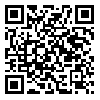Download citation:
BibTeX | RIS | EndNote | Medlars | ProCite | Reference Manager | RefWorks
Send citation to:



BibTeX | RIS | EndNote | Medlars | ProCite | Reference Manager | RefWorks
Send citation to:
Davari A, Farahat F, Mehranfar M. Evaluation of shear bond strength of bioactive glass ionomer containing titanium and conventional glass ionomer particles to dentin treated with Er-YAG laser and conventional methods. J Dent Med-tums 2022; 35 : 5
URL: http://jdm.tums.ac.ir/article-1-6138-en.html
URL: http://jdm.tums.ac.ir/article-1-6138-en.html
1- Professor, Department of Restorative Dentistry, School of Dentistry, Shahid Sadoughi University of Medical Sciences, Yazd, Iran; Member of Social Determinant of Oral Health Research Center, Shahid Sadoughi University of Medical Sciences, Yazd, Iran
2- Associate Professor, Department of Restorative Dentistry, School of Dentistry, Shahid Sadoughi University of Medical Sciences, Yazd, Iran
3- Post-Graduate Student, Department of Restorative Dentistry, Shahid Sadoughi University of Medical Sciences, Yazd, Iran
2- Associate Professor, Department of Restorative Dentistry, School of Dentistry, Shahid Sadoughi University of Medical Sciences, Yazd, Iran
3- Post-Graduate Student, Department of Restorative Dentistry, Shahid Sadoughi University of Medical Sciences, Yazd, Iran
Abstract: (1577 Views)
Background and Aims: Recently, the addition of nanoparticles into the restorative materials and tooth preparation by laser for improving the bond strength have been concidered by researchers. The aim of this study was to investigate the shear bond strength of the bioactive glass ionomer containing titanium particles and a conventional glass ionomer with two surface treatments by Er-YAG laser and conventional methods.
Materials and Methods: In this in-vitro study, 64 sound extracted premolars were collected. For conventional method, the specimens were prepared in such a way that dentin surfaces with a depth of 0.5 millimeter created at distance of 2 mm from the joint of CEJ at the root or crown. In the laser group, after preparing the teeth, the surface area was prepared by Er-YAG laser. Then, in the middle part of the buccal surface, a cylindrical mold with dimensions of 3.5 mm in diameter and 4 mm in height was placed and for each group was filled with its own glass ionomers. The specimens were divided into 8 groups by simple random sampling (n=8): A (laser, conventional glass ionomer, coronal dentin)/ B (laser, glass ionomer containing titanium nanoparticle, coronal dentin)/C (conventional, conventional glass ionomer, coronal dentin)/ D (conventional, glass ionomer containing titanium nanoparticle, coronal dentin)/ E (laser, conventional glass ionomer, root dentin)/ F (laser, glass ionomer containing titanium nanoparticle, root dentin)/ G (conventional, conventional glass ionomer, root dentin)/ H (conventional, glass ionomer containing titanium nanoparticle, coronal dentin). Finally, the shear bong strength by a universal testing machine was measured at a cross-head speed of 1 mm/min. For data analysis, Two-way ANOVA test was used to evaluate the effect of each variable and their interaction on the shear bond strength and Tukey test was used to compare the two groups.
Results: There was significant difference only between groups B with C (P=0.002), E (P=0.007), G (P=0.001) and H (P=0.01). The highest bond strength was found for group B (laser, glass ionomer containing titanium nanoparticle, coronal dentin) and the lowest bond strength for group G (conventional, conventional glass ionomer, root dentin).
Conclusion: All three factors of Er-YAG laser, glass ionomer containing titanium nanoparticle and coronal dentin had a positive effect on the improvement of the bond strength.
Materials and Methods: In this in-vitro study, 64 sound extracted premolars were collected. For conventional method, the specimens were prepared in such a way that dentin surfaces with a depth of 0.5 millimeter created at distance of 2 mm from the joint of CEJ at the root or crown. In the laser group, after preparing the teeth, the surface area was prepared by Er-YAG laser. Then, in the middle part of the buccal surface, a cylindrical mold with dimensions of 3.5 mm in diameter and 4 mm in height was placed and for each group was filled with its own glass ionomers. The specimens were divided into 8 groups by simple random sampling (n=8): A (laser, conventional glass ionomer, coronal dentin)/ B (laser, glass ionomer containing titanium nanoparticle, coronal dentin)/C (conventional, conventional glass ionomer, coronal dentin)/ D (conventional, glass ionomer containing titanium nanoparticle, coronal dentin)/ E (laser, conventional glass ionomer, root dentin)/ F (laser, glass ionomer containing titanium nanoparticle, root dentin)/ G (conventional, conventional glass ionomer, root dentin)/ H (conventional, glass ionomer containing titanium nanoparticle, coronal dentin). Finally, the shear bong strength by a universal testing machine was measured at a cross-head speed of 1 mm/min. For data analysis, Two-way ANOVA test was used to evaluate the effect of each variable and their interaction on the shear bond strength and Tukey test was used to compare the two groups.
Results: There was significant difference only between groups B with C (P=0.002), E (P=0.007), G (P=0.001) and H (P=0.01). The highest bond strength was found for group B (laser, glass ionomer containing titanium nanoparticle, coronal dentin) and the lowest bond strength for group G (conventional, conventional glass ionomer, root dentin).
Conclusion: All three factors of Er-YAG laser, glass ionomer containing titanium nanoparticle and coronal dentin had a positive effect on the improvement of the bond strength.
Article number: 5
Type of Study: Research |
Subject:
operative dentistry
Received: 2022/01/26 | Accepted: 2022/05/22 | Published: 2022/05/31
Received: 2022/01/26 | Accepted: 2022/05/22 | Published: 2022/05/31
Send email to the article author
| Rights and Permissions | |
 |
This work is licensed under a Creative Commons Attribution-NonCommercial 4.0 International License. |




